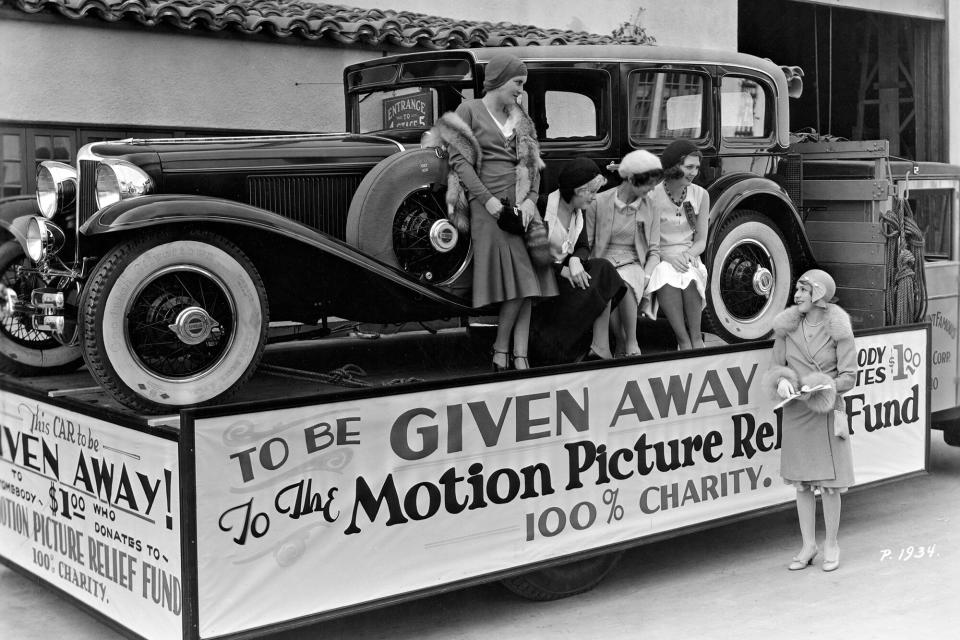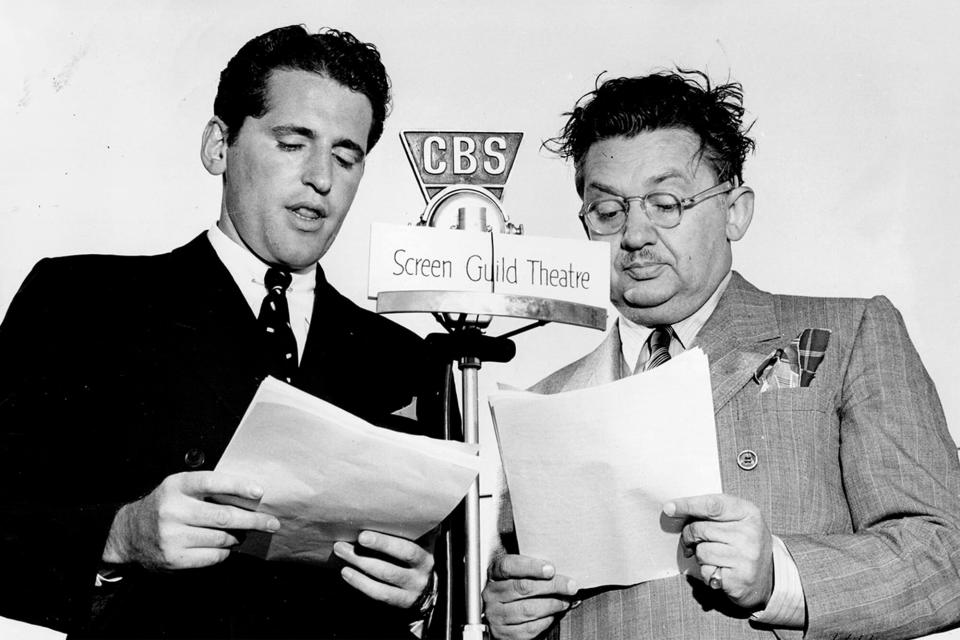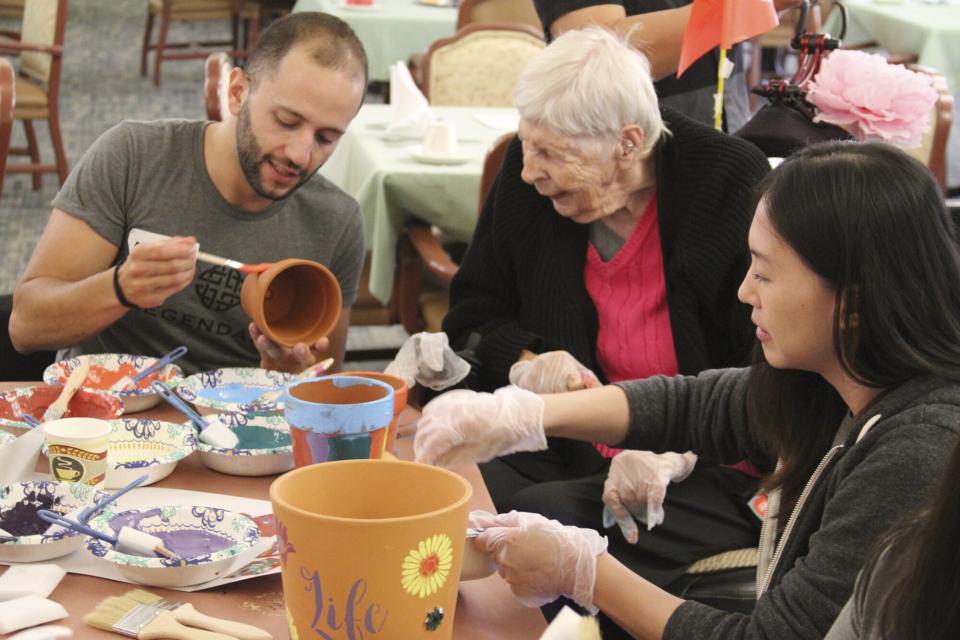Hollywood taking care of its own: 100 years of the Motion Picture & Television Fund

Illustration by Chris Gash for EW
Movies and TV shows may transport us to fantastical worlds and help us escape, but sometimes reality hits hard for the folks bringing those dreams to life — and for more than a century, the Motion Picture & Television Fund has been there to catch them when they fall.
Founded in 1921 as the Motion Picture Relief Fund by silent-screen star Mary Pickford, studio executive Joseph M. Schenck, and Rev. Neal Dodd (who played a minister in hundreds of films), MPTF was created to combat the precarity of working in the film industry. "We are a safety net for working members in the entertainment community, people both above and below the line," current MPTF president and CEO Bob Beitcher tells EW. "Wherever you are on the call sheet or wherever you work at a studio, we're there if you fall on hard times."

Motion Picture & Television Fund MPTF founder Mary Pickford (far right) holds a fundraiser auction in 1934.
In the wake of World War I, Hollywood had embraced the ways in which celebrity could be a force for good — and so those running the Fund turned their efforts inward, placing coin boxes on sets where cast and crew could donate. "Pickford realized that they were all one mishap away from needing some support," says Beitcher. "The notion was 'If you are fortunate enough to be working and earning money in the industry, then you should be putting in some spare change for those who aren't.'"
The coin box evolved to a payroll pledge in 1932, though that initiative went largely defunct in recent decades when studios jettisoned many craft departments and made them freelance. These days, MPTF relies on events and other major fundraising efforts to keep its doors open, which has become increasingly difficult (see call to action below).
But industry changes haven't stopped MPTF from helping those like Alex Aguilar Jr., a member of Local 724 who works in construction on sets. Aguilar, 45, went months without work during the 2007 writers' strike. Reduced to selling his car to pay his mortgage and buy groceries while his pregnant wife was on bed rest, Aguilar was directed to MPTF by a friend. "Imagine that someone just pays your bills, all your bills, for two months," he marvels. "At this point we were already behind two, three months on our mortgage — and they basically gave me a bunch of money and I never had to pay it back." The assistance from MPTF allowed him to stay afloat until the strike ended, and Aguilar now volunteers on multiple MPTF committees.
Perhaps the most concrete example of the organization's efforts is its campus, on a 44-acre parcel of land in Woodland Hills, Calif., purchased by Jean Hersholt in 1941 with the dream of transforming it into a retirement community for industry workers. Today it offers assisted living, a hospital, retirement cottages, and even a TV station and theater.
Kay Weissman, a retired flamenco dancer and actress, has lived on the campus for seven years. "It saved my life," she says. "I came here when my husband passed away. I was at loose ends and very lonesome and didn't know what to do with myself. Now I have a new life, new friends."

Motion Picture & Television Fund Original MPTF architect William Pereira and MPTF president Jean Hersholt appear on Screen Guild Theater, an all-star radio program benefiting MPTF from 1939 to 1952, featuring Hollywood stars re-creating some of their biggest films (e.g. Humphrey Bogart in 'High Sierra,' James Cagney in 'Yankee Doodle Dandy').
One of Weissman's main outlets is partnering with MPTF Studios and its TV station, Channel 22. Building on the legacy of Screen Guild Theater — a radio show featuring A-list talent who donated their fees to the Fund — Channel 22 began as a closed-circuit offering for residents and now includes virtual programming and more. "Creativity doesn't end when you turn 65," says Beitcher. "People 'aging out' of the industry still have a lot of creative juices left."
Weissman is currently preparing to portray Eve Harrington in a radio play of All About Eve. ("I get to play the ingenue at 86," she says with a laugh.) She also regularly appears on Channel 22 as a character she invented, Conchita Aguilara, alongside her dog Sammy Davis Jr. (so named because he has one eye, naturally). "Conchita is an ex-star who thinks very highly of herself," she says. "I decided to make her the weather girl, because she still thinks she's cute." Her weather reports often include musical performances — Weissman warbles a rendition of "Singin' in the Rain" over the phone as an example.
Fittingly, the studio was constructed by Aguilar and a crew he organized. "It's like an extended family," he says of the pay-it-forward mentality at MPTF. "They help so many members. I've lived it, I've seen it. And now I'm just doing my part to keep it going for another hundred years."

Motion Picture & Television Fund Volunteers from media company Legendary Entertainment paint with campus residents.
How you can help
"Our mission has never faced such dire challenges," MPTF president and CEO Bob Beitcher said in an appeal sent to around 600 industry leaders in October. "To put it bluntly, the MPTF legacy and mission — our ability to exist — are in real jeopardy. Without some dramatic infusion of funds, we will not be able to take care of our own much longer."
And if not money, you can donate your time to MPTF's committees and days of service. "It's playing games with the residents, doing craft-driven projects, cleaning up campus, wrapping presents for the holidays, virtual programming, delivering food — there's a wealth of ways to get involved," says chief development officer Courteney Bailey.
"Our No. 1 priority is asking people to donate money so we can stick around for another century of service," she continues. "Then it's telling our story so people know that we exist. Then it's to get involved — and volunteering is a great way to do that."
Visit mptf.com/ways-to-give and mptf.com/volunteering.
Check out more from EW's latest Awardist issue:

